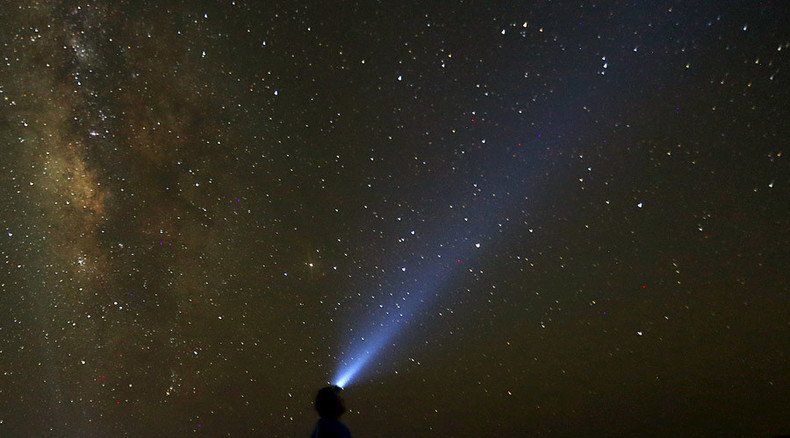Finding life on other planets just got easier with new scientific method

Humans may feel small when contemplating the universe, but astronomers are closer than ever to at least making us feel a little less lonely thanks to a new method of measuring planetary habitability and advances in telescope technology.
READ MORE: Ancient Mars hosted long-lived lakes & rivers, NASA’s Curiosity Rover team says
The University of Washington’s Virtual Planetary Laboratory, led by Professor Rory Barnes, came up with a way to identify exoplanets with the most likelihood of sustaining life. Exoplanets are planets outside our solar system. So far, 1,000 of them have been confirmed and 5,000 more have been tagged as candidates, mostly discovered by NASA’s Kepler Space Telescope.
Barnes and his team developed a habitability index to rank the exoplanets in time for the launch of the James Webb Space Telescope scheduled for 2018. The Webb will enable scientists to search for life more effectively by using “transit transmission spectroscopy,” the observance of when a planet moves in front of its host star. The Transiting Exoplanet Survey Satellite, or TESS, which launches in 2017, will also be used to find more worlds to plug into the index.
‘Scientific bonanza’: New NASA images reveal Pluto’s giant ice mountains, hazy world http://t.co/CrwhTrB7S5pic.twitter.com/CtEDgmWevc
— RT America (@RT_America) September 18, 2015Before this new innovation, scientists had to seek out the “Goldilocks zone,” the area around a star where atmospheric pressure is “just right” for an exoplanet to plausibly carry water. “Now it’s as if Goldilocks has hundreds of bowls of porridge to choose from,” Professor Barnes said.
READ MORE: 'More dragon scales than geology': Pluto like we've never seen it before (PHOTOS)
The new index shows how rocky a planet is and then considers its “eccentricity-albedo degeneracy,” the ratio of energy reflected off a planet’s surface versus its orbit’s effect on energy received from its host star. If the albedo is high, more light gets bounced off into space, making the surface less warm. In such a case, a more wobbly orbit would be needed to get the exoplanet closer to its star so that it could absorb more energy to sustain life. And vice versa. It’s the equilibrium that the index is concerned with.
So where are new life forms most likely to be discovered? For now, that’d be planet KOI 3456.02, which scores a 0.955 on the habitability index. The next one is Kepler-442b, reaching 0.836 on the index.
Exoplanet in motion: Astronomers snap alien world circling star 63 light yrs away (VIDEO) http://t.co/v2qfL5K1KYpic.twitter.com/ibQNgb4KTS
— RT (@RT_com) September 21, 2015How does Earth score on the index? It comes in at 0.829 – surprisingly “less likely” to support life than the top two exoplanets.
But don’t pack your bags yet.
“The power of the habitability index will grow as we learn more about exoplanets from both observations and theory,” said Victoria Meadows, co-author of a University of Washington study titled “Comparative Habitability of Transiting Exoplanets” funded by the NASA Astrobiology Institute.
'Next-door neighbor’: 2nd exoplanet discovered 21 light-years from Earth http://t.co/x9eFVnmm5bpic.twitter.com/oJup2DfHhp
— RT (@RT_com) July 31, 2015













